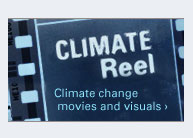posted by Dr. Amber Jenkins
16:00 PST
Every quarter, we post a new mystery image quiz in collaboration with the Multi-angle Imaging SpectroRadiometer (MISR) mission team here at JPL. The quiz, "Where on Earth?", is designed to test your geographical wits. The images show various locations on the planet, as seen by the MISR instrument from space. Here is this month's quiz. A link to the answers is given below.

This image was taken by the Multi-angle Imaging SpectroRadiometer (MISR), and represents an area of about 327 kilometers by 375 kilometers. Please note that North is not necessarily at the top of the page. These questions refer to a country that fills most of the area within the image. Please answer the questions below and tell us where on Earth you think the location is. You may use any reference materials you like to answer the quiz.
1. Within this country is a picturesque desert, located at the bottom right side of the image. This desert was home to a group of enigmatic, ancient people, who were known for their skill and resourcefulness. Their capital is a UNESCO World Heritage Site. Name the Desert and the given name of the people.
2. The striking wavy lines that cross the middle of the image are natural geologic features that often carry descriptive names of their location. What is the native word used to call and accurately describe these features?
3. The name of the body of water partially shown at the bottom of the image is actually a misnomer. The nearby hills that protect the landscape from weather pressure fronts, also enable a “rain shadow”, thus contributing to the surrounding aridity. What is the name the body of water?
4. At the bottom left of the image, small city developments are visible, of which one city came in to development during the beginning of the 20th century. It now accounts for 50% of the industrial work of the country. Name the city.
5. The striking landscape dominating most of the image is an extension of a much larger, natural feature. This feature is home to a very limited floristic diversity, and to a number of critical and endangered species, where there are no formally protected areas. Name this feature.
6. Name the country that fills most of the area in this Image.
Check your answers here.
Image credit: NASA/GSFC/LaRC/JPL, MISR Team Text acknowledgement: Amber Jenkins and Karen Yuen, JPL.










